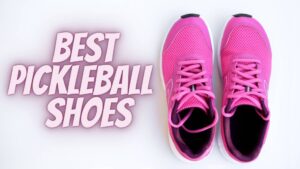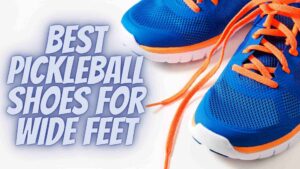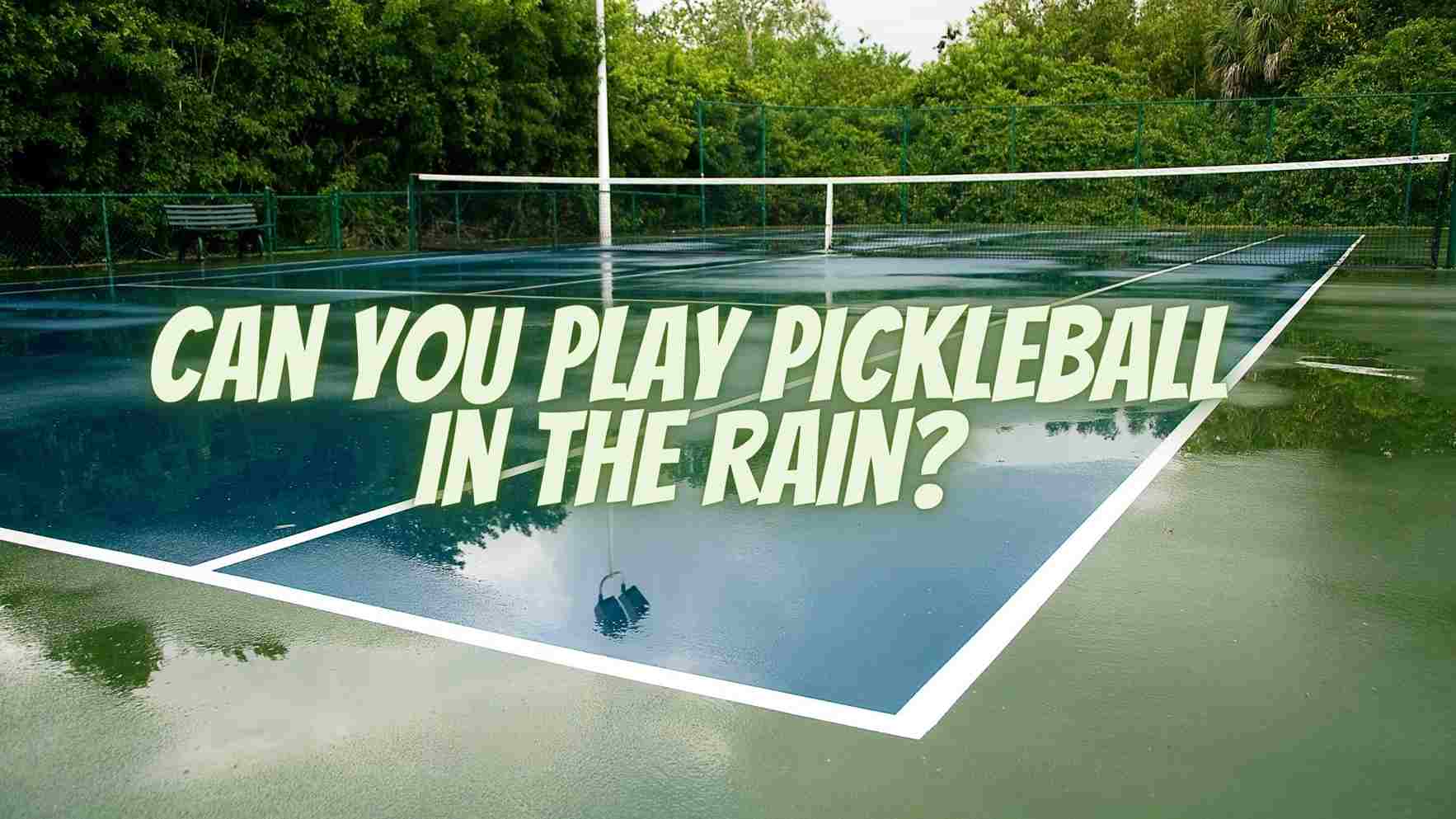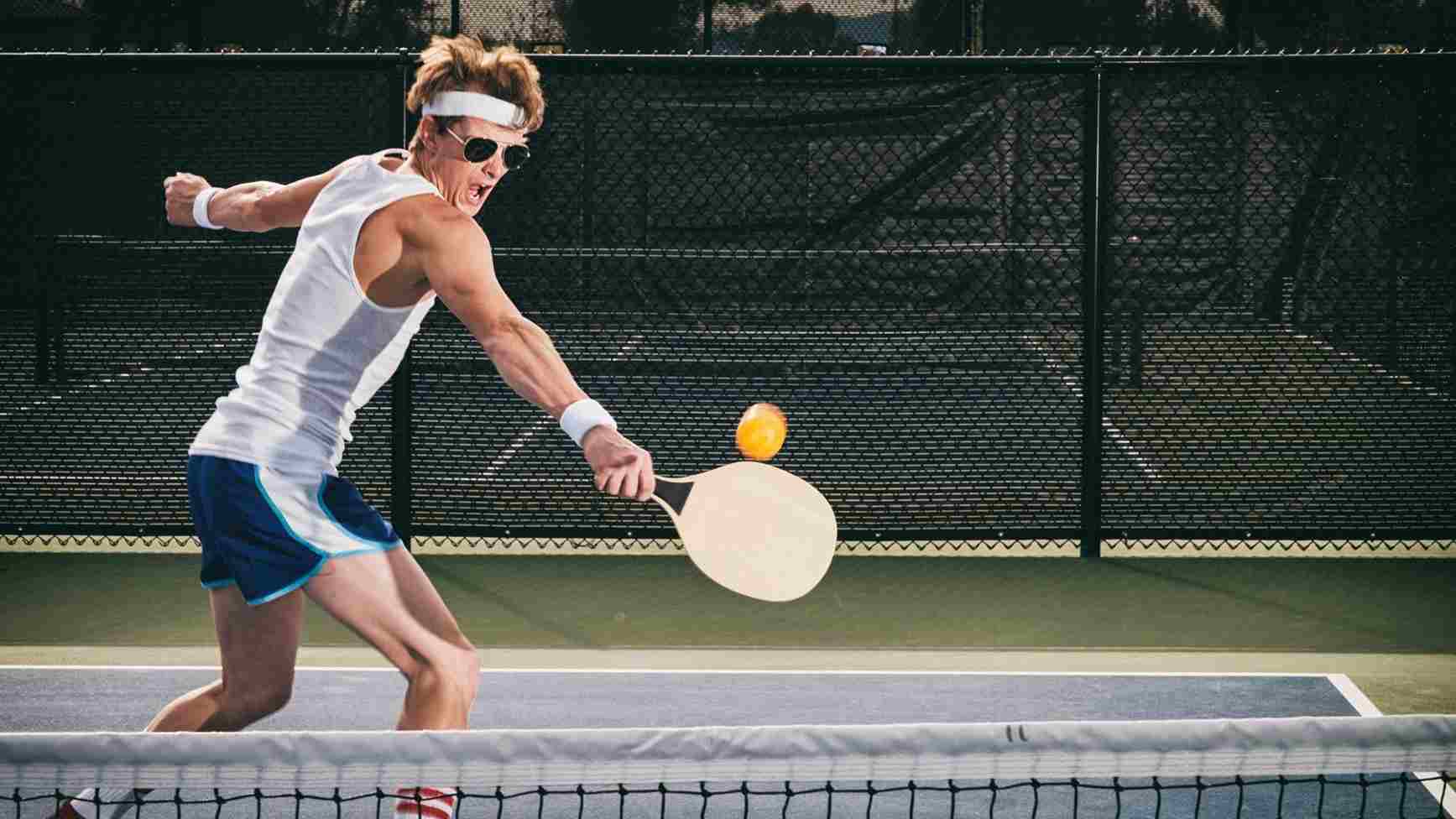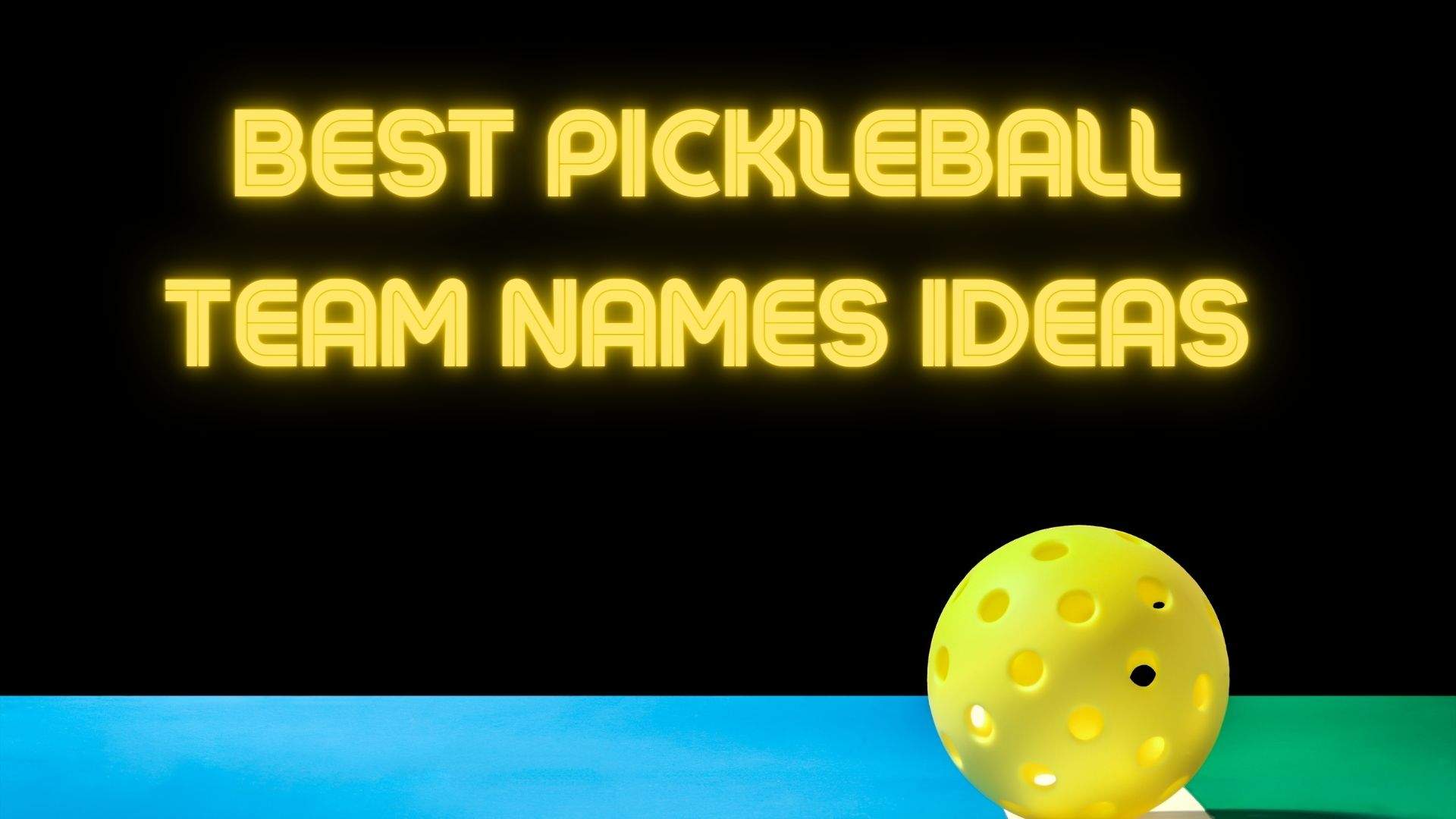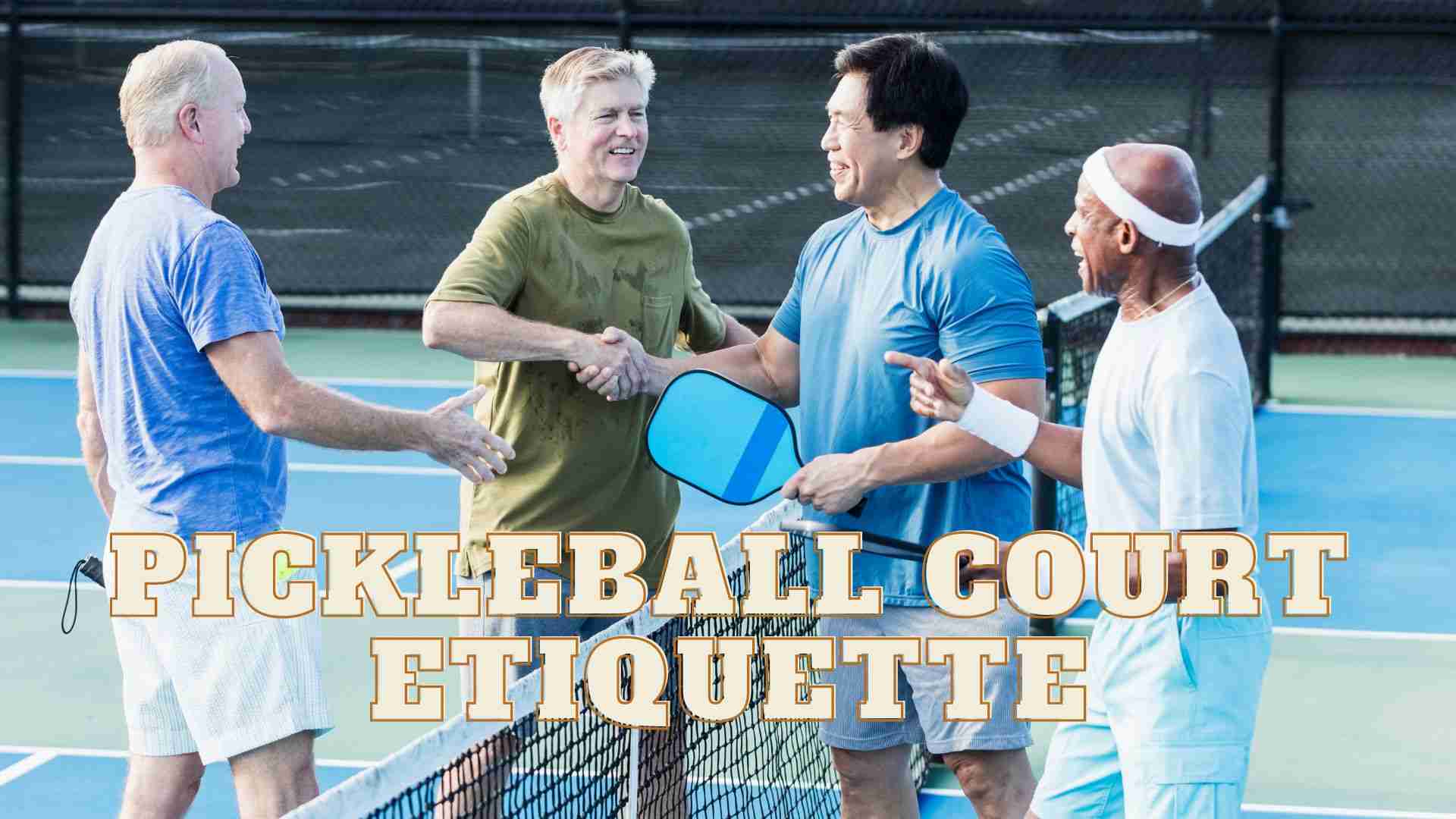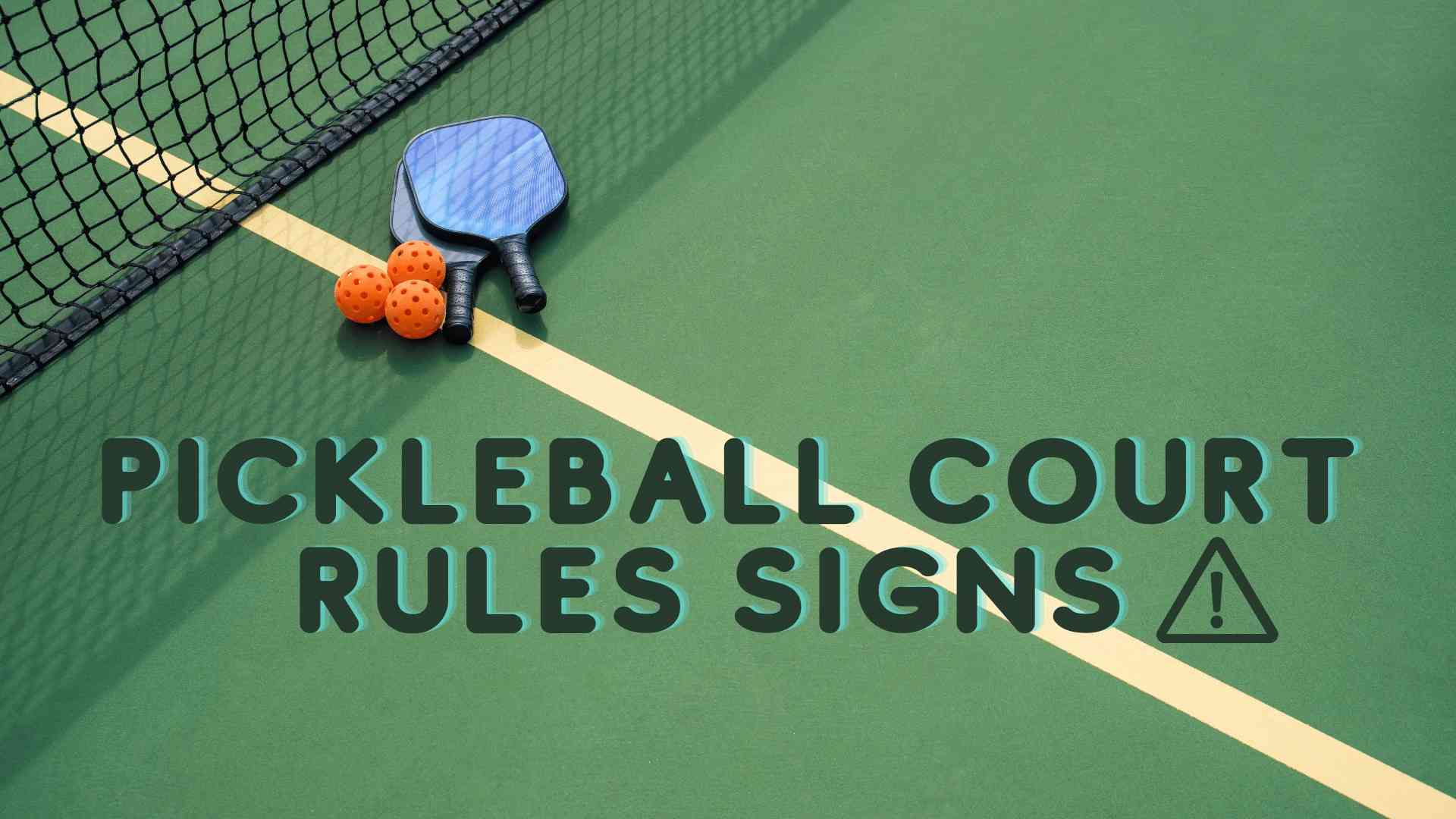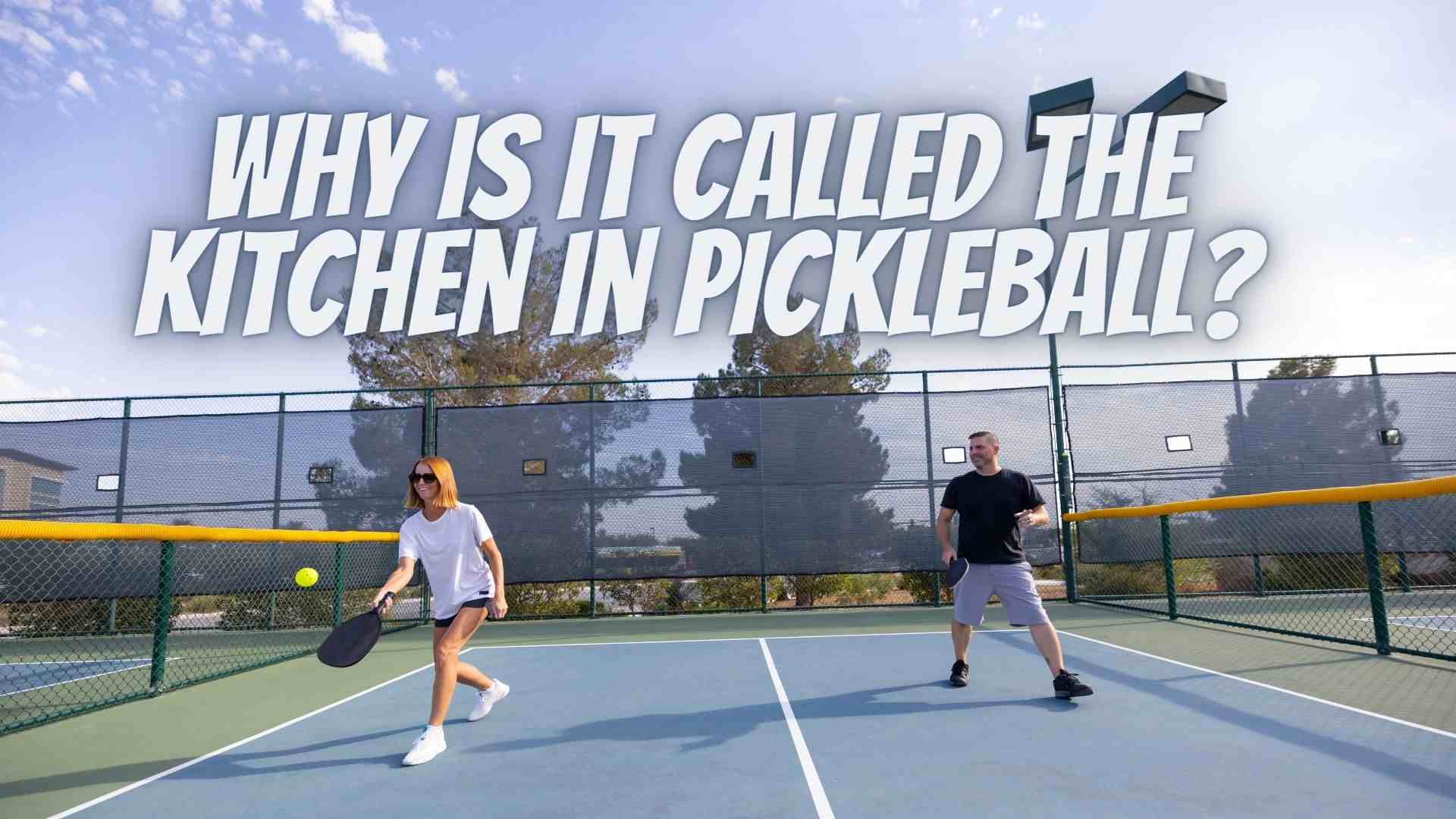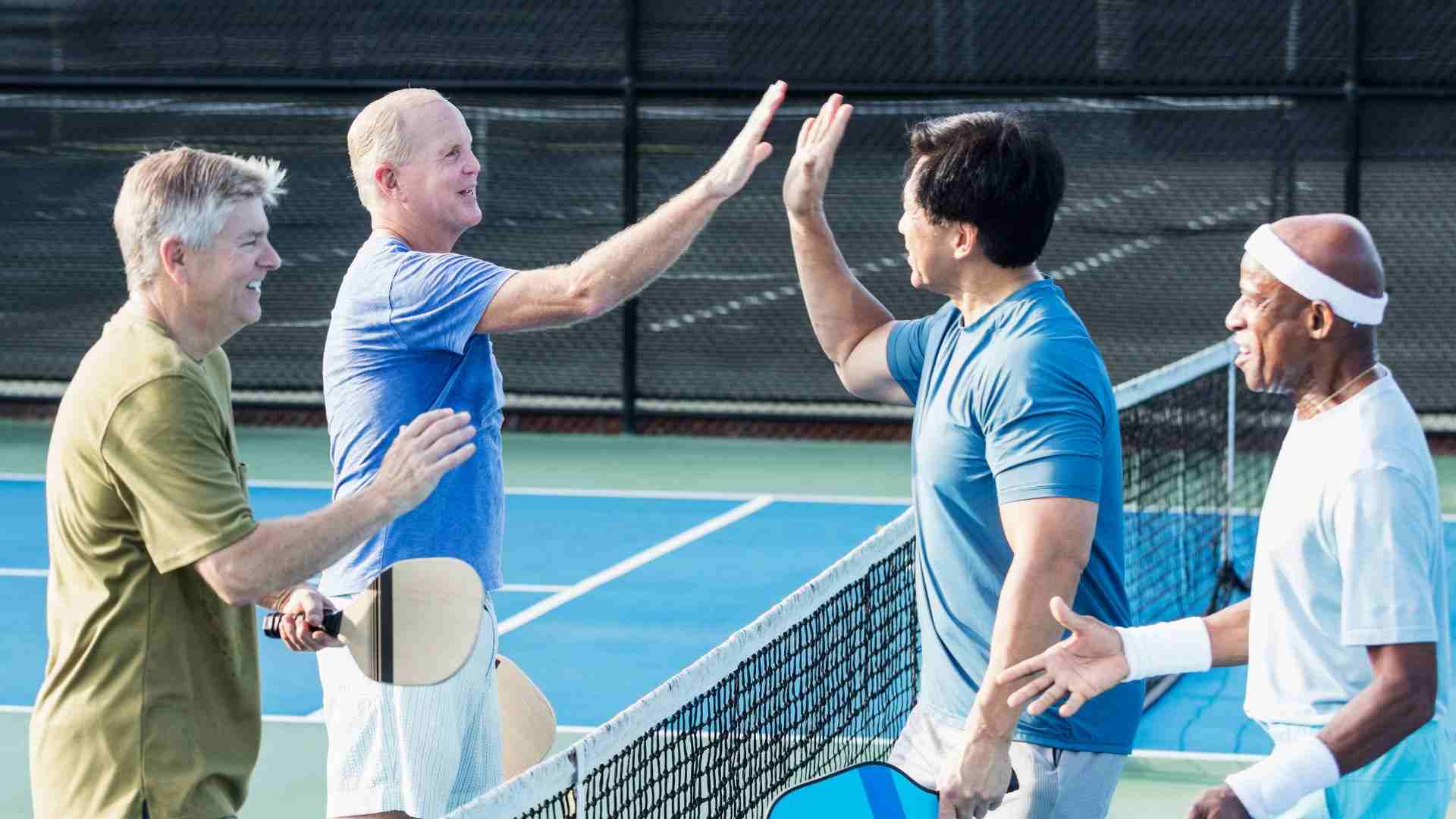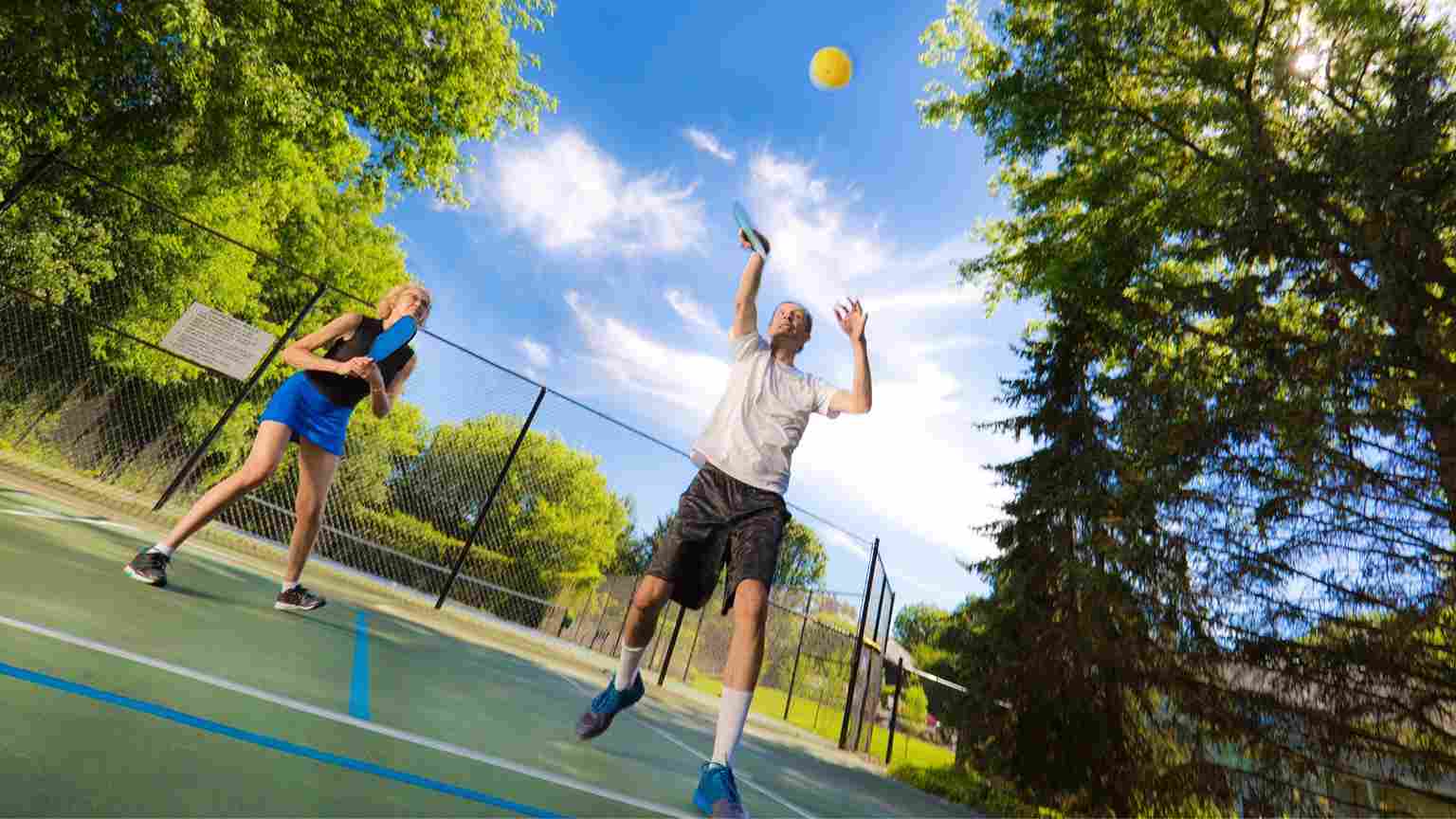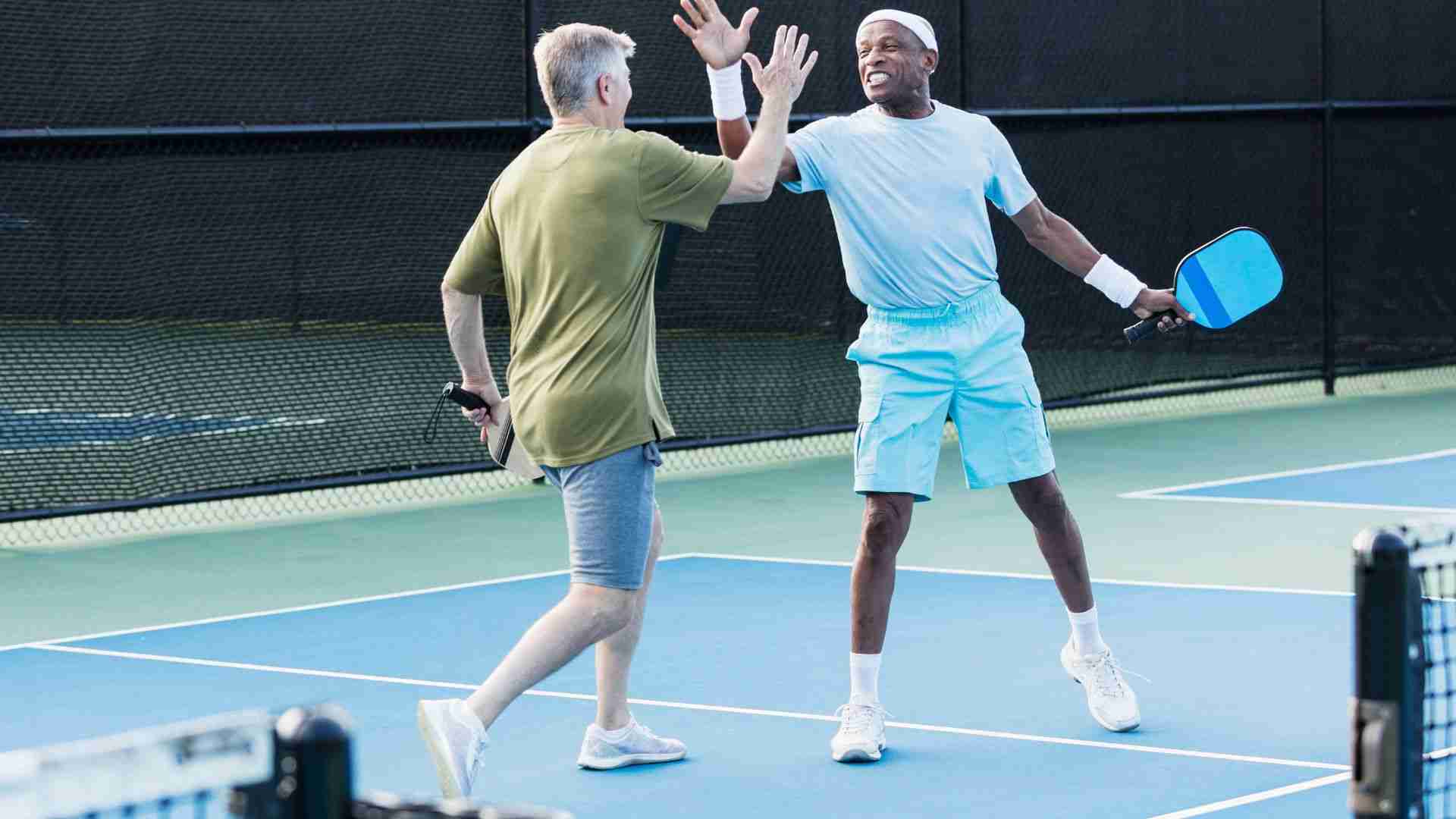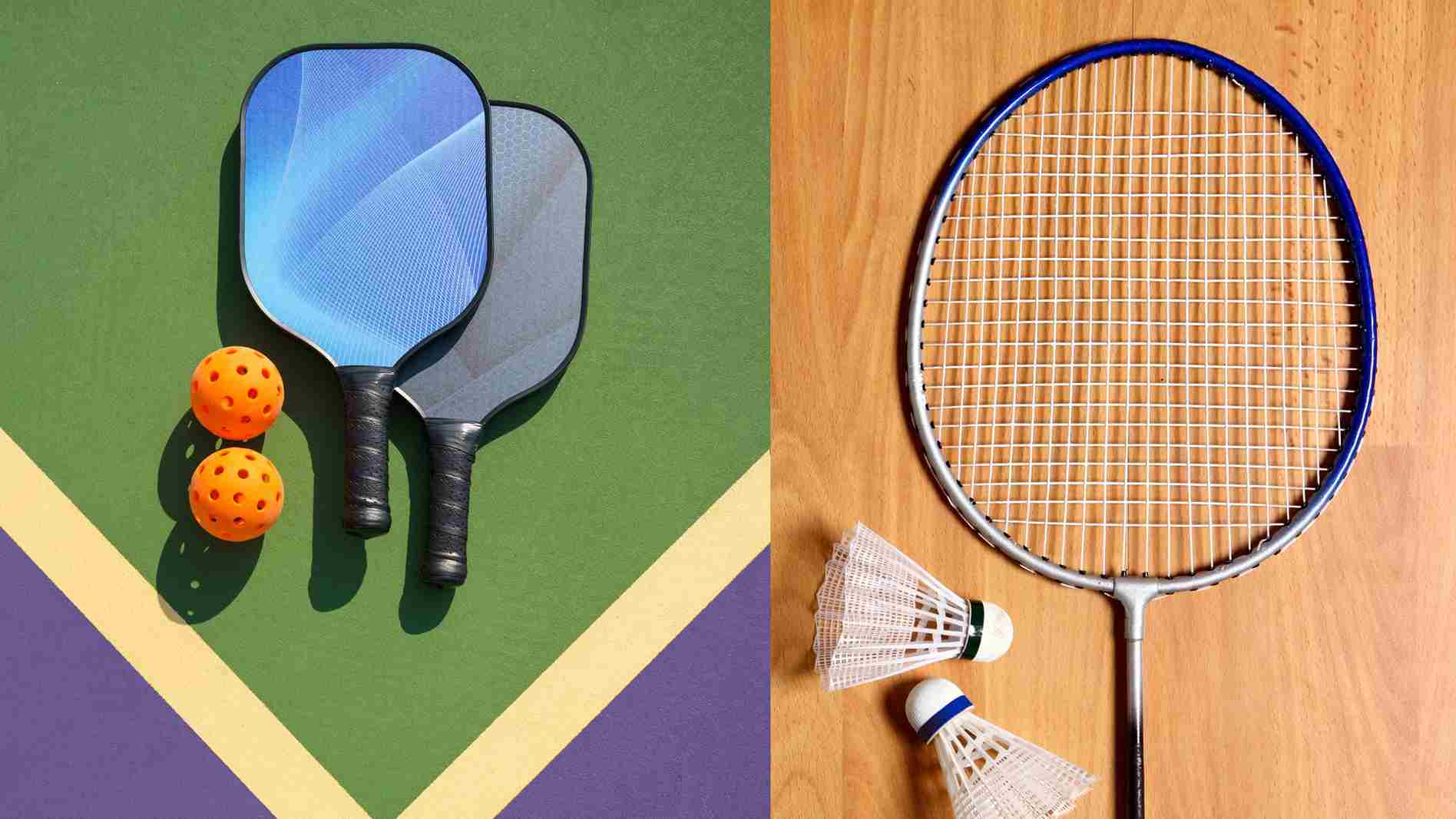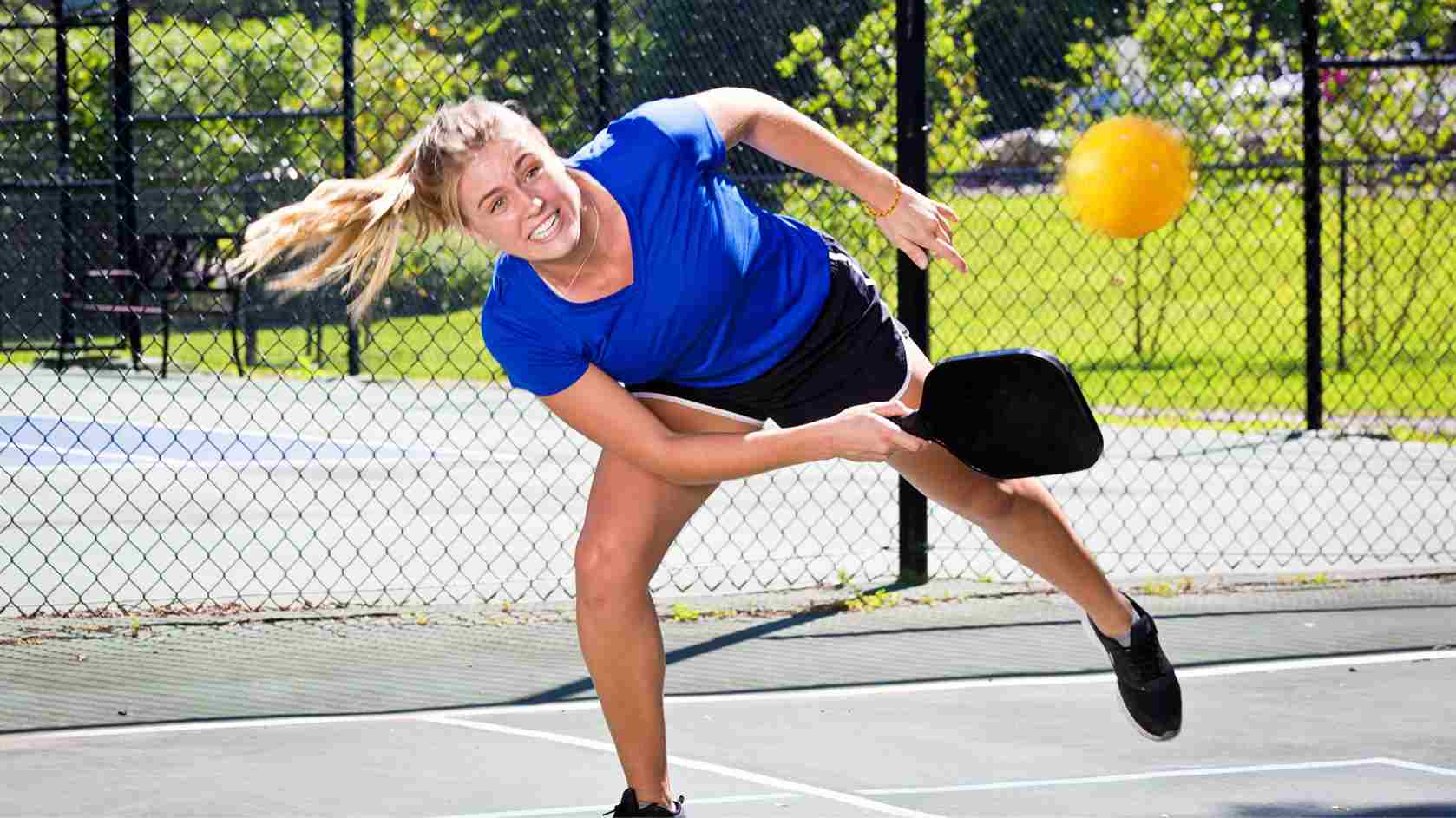
I guess you have your pickleball paddle all set up in your hand and are ready to play. However, you are still trying to figure out, How to play Pickleball? and What are the confusing basic pickleball rules? Even though you are all geared up and ready to go. Do not worry. We have got you covered.
When it comes to pickleball, a few simple pickleball rules must be followed. There are five basic rules for pickleball: The ball must stay inbounds, underhand serve behind the baseline, no serve in the non-volley zone, one bounce per side, and 11, 15, or 21 points end the game.
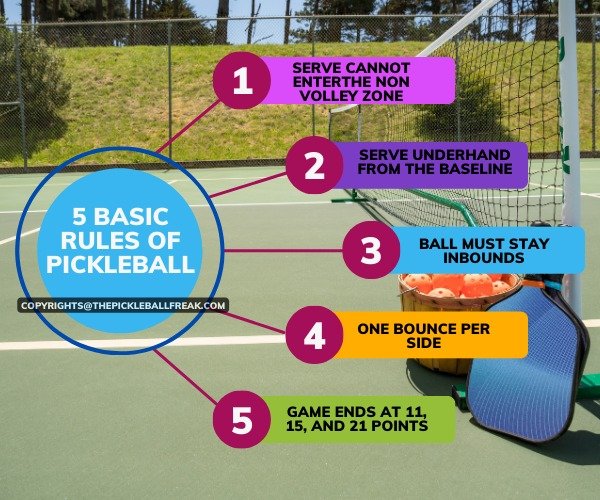
To help you to get the most out of your game of pickleball, this guide will provide you with a comprehensive overview of the pickleball rules for beginners and the concepts involved, as well as some tips and tricks.
There are also plenty of variations that can be made in the rules of pickleball, some limitations, and some tactics that can be used to adapt some of these official pickleball rules so that they fit your own desired way of playing, just like in other games. It is important for you to know the USA pickleball rules!
What Are 10 The Rules of Pickleball?
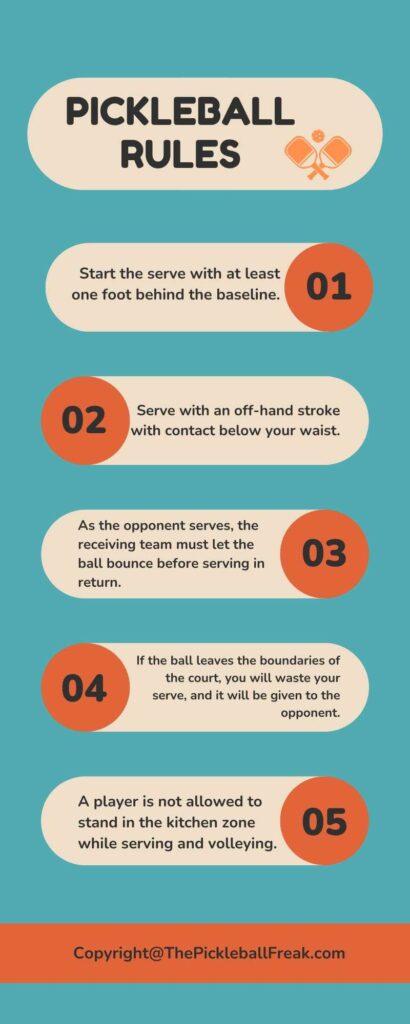
By learning these basic pickleball rules, you will be able to achieve the level of proficiency you need to become a very good pickleball player. The following are the basic rules of pickleball explained briefly that you need to know.
1. Building A Court – Pickleball Court Rules
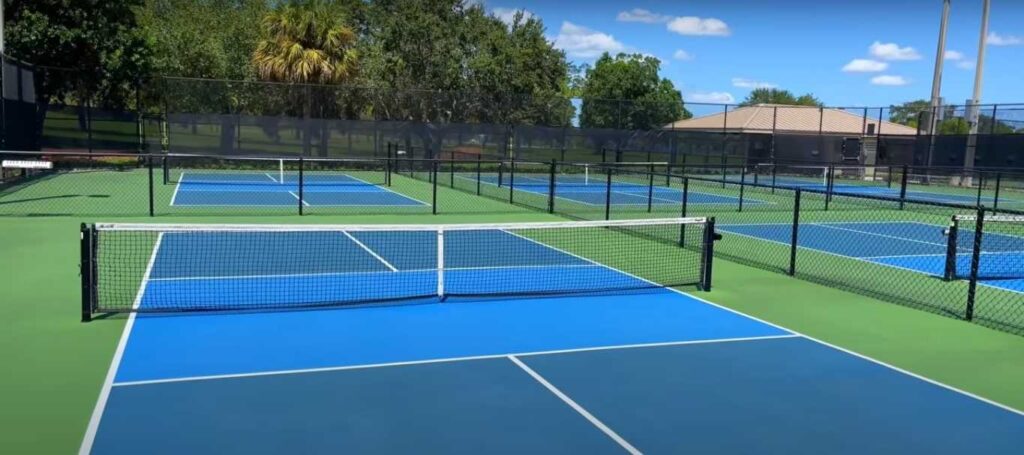
Pickleball is played on a court 20 feet in width and 44 feet in length with dimensions (20′ x 44′). It is the same size as a badminton court, and It can also be built on a tennis court. In fact, it is much smaller than a tennis court, and four pickleball courts can be built on one tennis court.
The height of the net is 36 feet at the sidelines and 34 feet in the center, and there is also a 7 feet non-volley zone or kitchen zone from where no serve can be made, and not even a player can step into it while playing or serving.
2. Start With A Serve
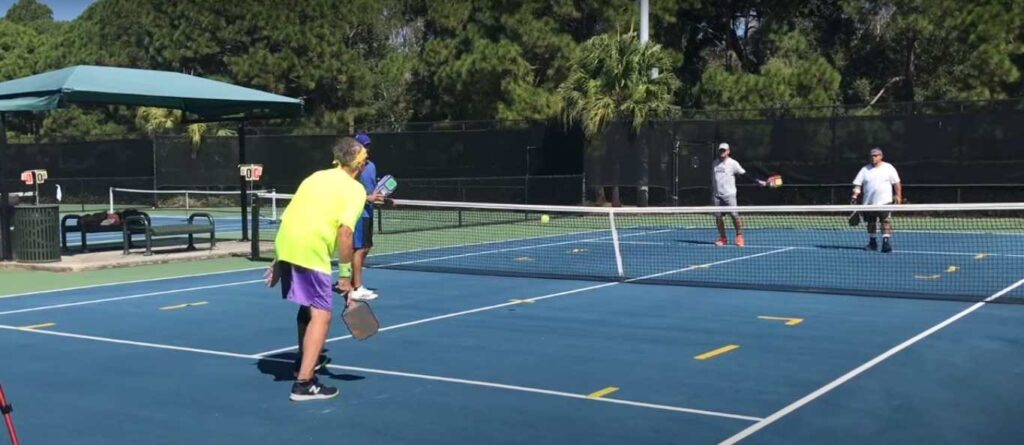
The pickleball game with the pickleball rules of play begins when one of the players serves his opponent, with each point beginning with a serve.
From the baseline on the right side of the court, facing their opponents, the player on the right side of the court starts the serve by serving diagonally to the opponent into either the right-hand or left-hand service areas.
In order to be counted, the serve must clear the “Kitchen” area as well as the line.
3. Position Of Serve
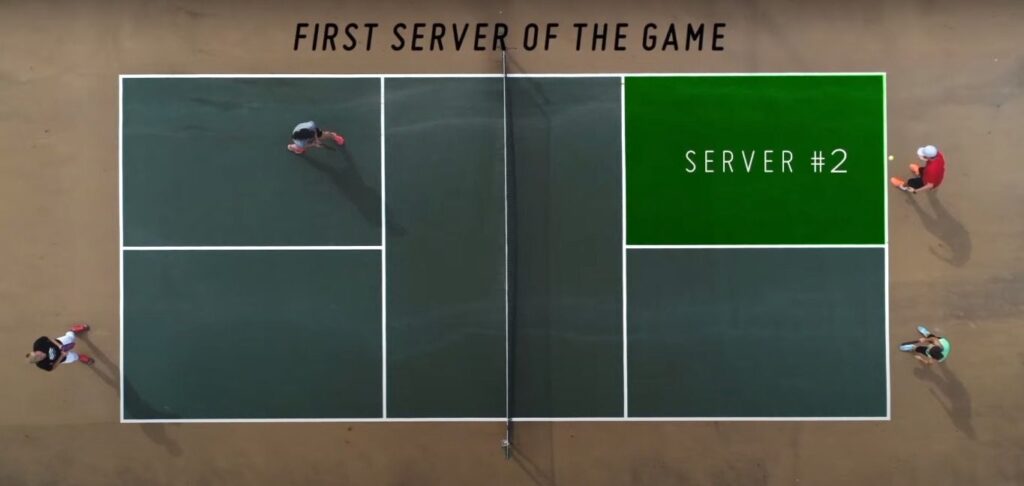
It is mandatory in the rules of pickleball that when you serve a pickleball ball, you use an off-hand stroke with contact e below your waist. In order to strike the ball properly, your arm must move upward when you strike it.
You must place the paddle face below your wrist. A pickleball serve can be described as an underhand service that ends with an ascending motion at the end.
4. Serve Underhand From The Baseline

In pickleball one of the key rules of basic rules of pickleball is that the serve must be made underhand, with the paddle contacting the ball below the server’s waist level whenever a player serves first. When serving your foot should be one ft behind the baseline.
As a result, players are not allowed to hit the ball over their waist when making the serve, nor can they serve overhand when doing so.
You can hit the ball out of the air or drop the ball on the ground and hit it. Serves, according to the rules of pickleball, are intended to put the ball into play, unlike tennis serves, which are intended to be high and forceful to win the game.
If the ball is served overhand above the waist level, then the pickleball player will need to use a greater amount of force to strike the ball, which means more power will be needed. However, this rule allows the pickleball player to save so much energy at the beginning of the game.
The power of a well-placed, low serve that lands deep in the opponent’s court can be just as powerful as a fast, high serve that bounces near the baseline but lands on the opponent’s court.
The baseline cannot be crossed before serving by the basic rules of pickleball, but once the serve has been made, you are free to move anywhere inside the serving area on your side of the court. Those who fail to follow one of the basic rules of pickleball will be considered at fault.
5. Serving Order
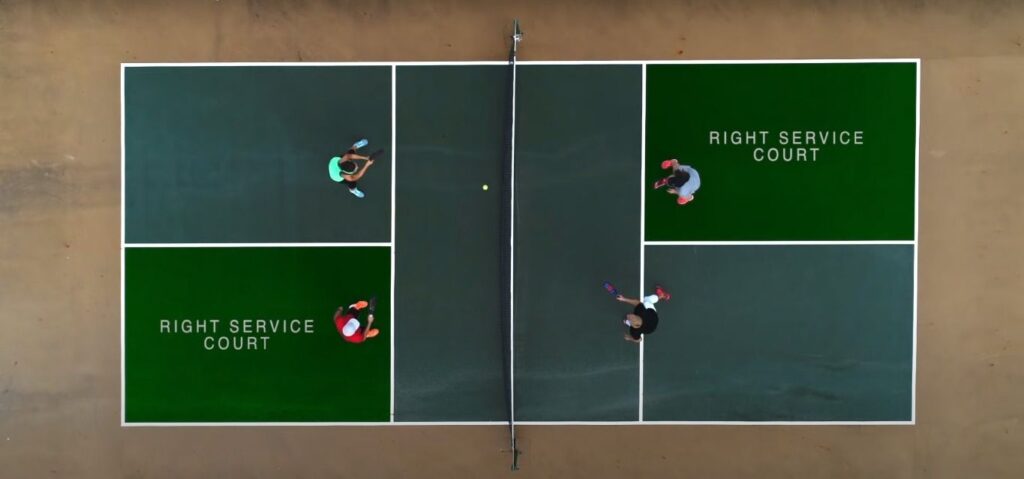
A coin flip or random number selection is usually used to determine the serve order. Each player gets a chance to serve until he commits a fault.
There is an exception to this rule out of all rules of pickleball in each game when it comes to the first service, where only one player from the team that is serving the first is able to serve before the service is passed on to the other side.
Whenever the serve changes sides, the first serve is from the right-hand side of the court, and when you score, you switch sides of the court for your next serve.
A violation of these pickleball rules for beginners will count as a fault, and the serve will be given to the other teammate or to the other side directly when these rules are broken.
6. Pickleball “Double Bounce” Rule
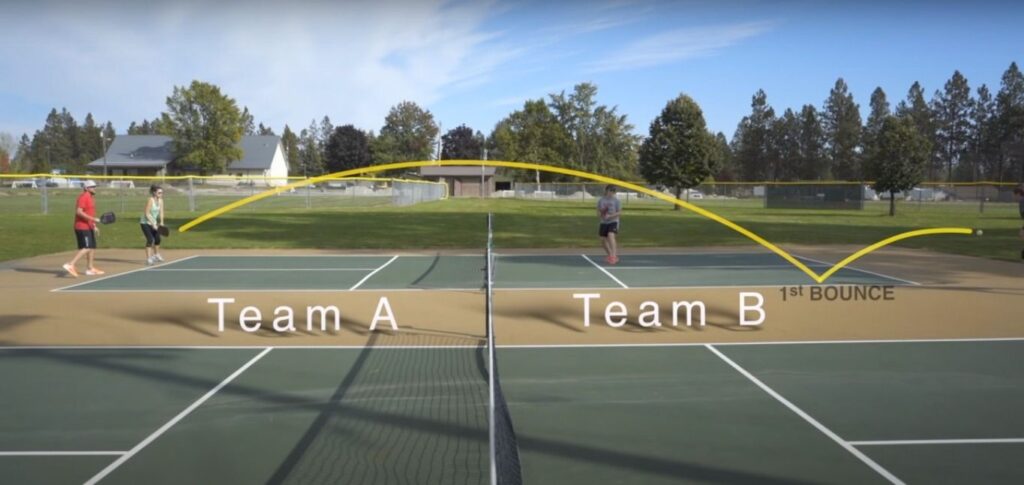
This is one of the most distinguishing rules of pickleball, which allows even the best players to compete without having to cheat in order to win.
According to this rule, “the ball should bounce once on each side of the court at the start of every rally” made by any of the players. As soon as an opponent serves the ball, return the ball after the receiving team bounces the ball, and as soon as the opponent serves the ball, both teams must let the ball bounce before returning the ball.
In the case of a serve, the ball bounces off the service court of the opponent, and the receiving team is required to stand still until the ball bounces again on their side before they can move up to serve the ball again.
The two-bounce rule is one of the most important rules of pickleball that becomes effective after the first two returns, neither team will need more bounces to complete the double bounce rule pickleball, so either team may play the ball over the net or let it bounce forward on that particular turn and the players can play it anyway, either letting it bounce first or just hitting it high in the air.
It is important to deliver a serve in such a way as to make sure that the team serving does not strike the ball forward and then run directly to the net and hit it directly at its opponents but must instead wait for the bounce back from their opponents before returning the serve.
It is common for beginners to forget one of these pickleball instructions because they tend to serve too fast and may end up hitting the ball in the air while trying to advance quickly with the serve.
7. Ball Must Stay Inbounds
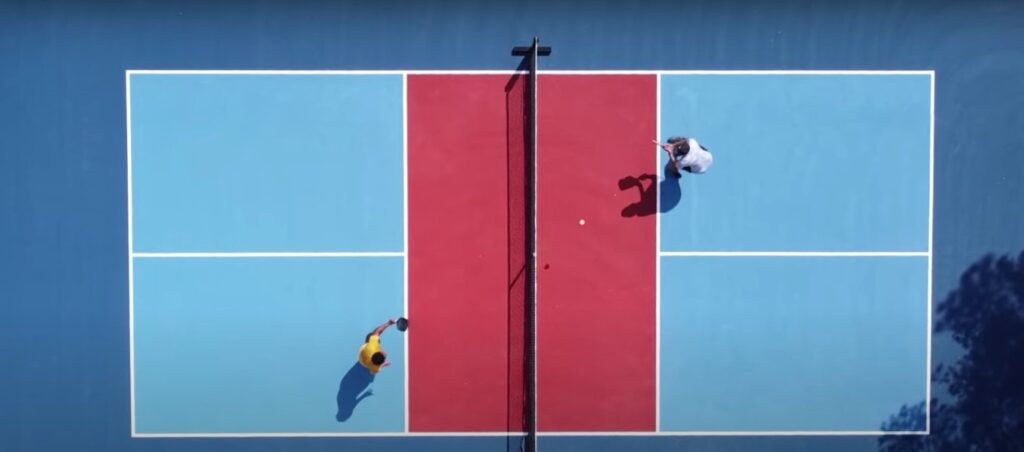
This is the most basic and foremost rule of any paddle game and pickleball in which the ball should not leave the pickleball court or any other boundary of the court. When a player serves, the ball has to be within the pickleball court lines that are made with chalk or anything like that.
If you are not able to return the pickleball to your opponent after the serve has been made and the bounce has been bounced once, and it goes out of the boundaries or confines, then it will be considered as a fault, you will be penalized with the loss of a point, and your opponent will be benefited by getting a chance to serve.
It is also important to note in the pickleball court rules that if your ball leaves the boundaries or marked areas of the pickleball court, you will waste your serve, and it will be given to your opponent. For this reason, the ball must stay within the boundaries of the court on either side in order to be played.
In pickleball, whoever serves first gets the chance to score points, and in this way, your opponent gets the benefit of points, isn’t it horrible enough? So next time, watch out when your ball is getting out of the court and try to follow the basic rules of pickleball.
8. “The Dink Shot” From Kitchen

Your opponent may hit a short shot, called a dink, that lands in the non-volley zone in pickleball, in which case you have the opportunity to enter the kitchen and hit a defensive shot from there.
An important part of the rules of pickleball game and pickleball strategy is the use of dink shots as a defensive mechanism to the opponent’s pickleball non volley zone.
The best way to master it once you have moved into the kitchen to field a dink is to dink right back to the kitchen of your opponent.
9. Calling Lines In Pickleball
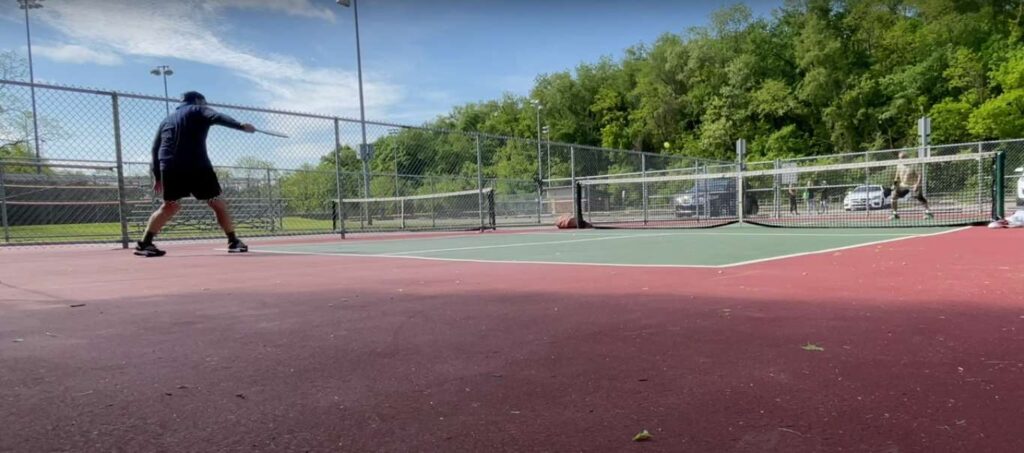
It is the responsibility of the players to call the lines honestly in the rules of pickleball, which means that a ball that encounters any line except the non-volley line is considered fair. It is a player’s role to call the lines on their side of the net and the opponents on their side of the net.
It is never a good idea for players to make a call on the opponent’s side of the net without being asked for it by the opposing team. The benefit always goes to the opponent if a team cannot decide on a line call that will benefit them.
10. Game Ends At 11, 15, And 21 Points
Pickleball is played to 11 points, mostly in the singles games. Pickleball, doubles, and tournaments are played to 15 or 21 points. If both players have a difference of one in their scores, like one has 11 and the other has 10, then singles can be extended to 15 points, according to the basic rules of pickleball.
When two teams are playing a game to 11 points, which is most commonly done in singles, both teams swap their positions after the first team scores at least six points in the game. On the other hand, when playing pickleball to 15 or 21 points (most commonly when two teams play doubles), the teams switch positions when the first team scores at least 8 points.
“The Non-Volley Zone” Faults
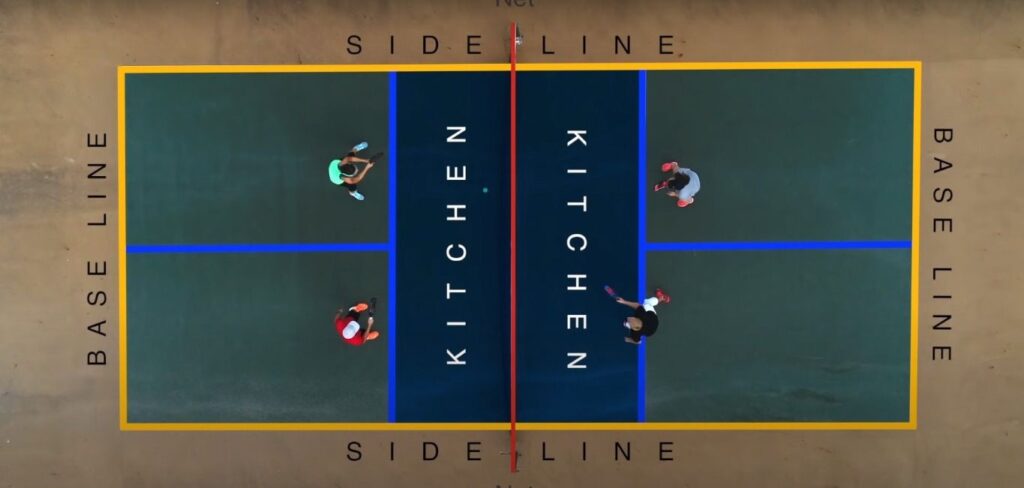
First of all, I would like to know what your biggest nightmare is. Mine is the non-volley zone, also known as the kitchen.
The non volley zone pickleball or kitchen is an area of 7 feet on both sides of the court net. The non-volleying rule in the kitchen is made to prevent the players from smashing the ball within the zone or from the net.
A player is not allowed to serve from the non-volley zone during a rally, nor is he allowed to step into this zone after the serve has been made, according to the basic rules of pickleball.
A kitchen zone line must not be crossed before or after the serve. You are not allowed to stand in line or touch it in any way. When your opponent serves you the ball, you must stand outside this zone and let the ball bounce at least one time before attempting to hit the shot.
If the ball bounces once, then the only time you can enter the non-volley zone, and it is not considered a fault, is if the ball has bounced once. The player should not have any of his goods, such as clothes, equipment, etc., within the kitchen zone when he is volleying. If there are any of these items in the zone, then that is a fault, and the player loses the rally.
It results in a fault if your momentum after you hit the ball carries you to the non-volley zone, if you take the support of your partner who is in the non-volley zone or touch him physically, or if your pickleball paddle falls out of your hand into the kitchen zone, then all of these will be considered against the basic rules of pickleball.
You are only allowed to enter the kitchen when you are not volleying, and you may stay in the kitchen zone while your partner is volleying, as in pickleball doubles. Also, you can enter the non-volley zone to hit it after the ball has bounced once.
“Faults” In Rules For Pickleball
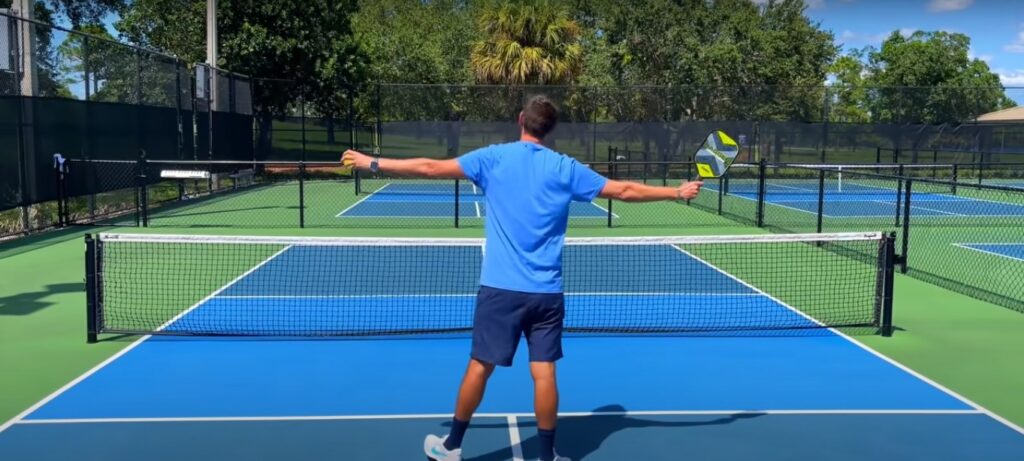
Once a serve has been made, the game continues until a “fault” has been made. Points are lost when there is a fault. The game of pickleball has no “let,” which means that if you serve the ball to the net, there won’t be a retry, and the ball will be played as soon as it lands on the court.
When the ball hits short of the service court, including non-volley lines, the serve is faulted. A fault is considered in the rules of pickleball when the ball is served to the wrong court, too far behind the back line, or outside the court. A player also commits a fault if he or she steps into the non-volley zone during a volley shot and the ball hits the net or another permanent object like a pole.
In the event of a ball being hit into the wrong court by the serve, and the opposing player in that court is hit or catches the ball by the serve, it is considered a fault. It is recommended that players do not catch a ball that is headed out of bounds and that they let the ball bounce first before catching it. By shouting out or waving your hand, you can indicate an out ball.
There is a fault and a point for the opposing team if, after hitting the ball, a player or his clothes during a rally touches the kitchen zone line while they are standing on or off the court. The opposing team is also penalized if it fails to hit the ball before it bounces twice.
Conclusion: Rules To Play Pickleball
There are some rules of pickleball and two ways to play pickleball: singles and doubles. Pickleball can be played on a badminton-sized court, and pickleball rules singles are the same as doubles in case you are wondering how to play pickleball singles.
The rules in pickleball are similar to tennis, with the ball being served diagonally and played over a net. A point is scored when the opponent does not return the ball within the bounds of the court.
The ball can be played off the walls but must bounce once on each side before it can be returned. Typically, the game will be won by the first player or team to score 11 points, with a 2-point lead required to win. Non-volley zones are in play, and players are not allowed to volley the ball while they are within these zones.





